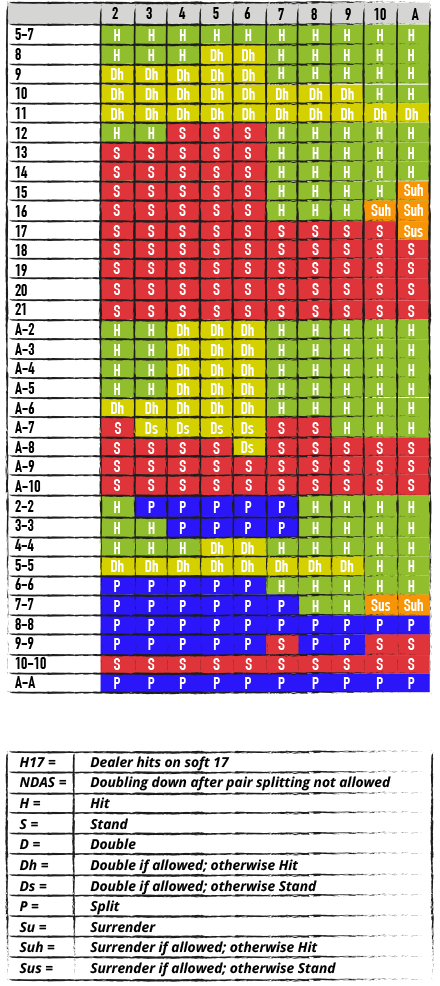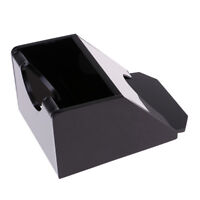How To Deal One Deck Blackjack
I spent so much time writing my response that I decided to post it here:
Can you tell me the function of the cut card in blackjack.
What is its function and does it affect my play if I'm counting?
I assume that you are referring to the cut card in a hand-held game.
In shoe games it is simply the delimiter that tells the dealer when the last hand has been played.
In a hand-held game (a 'pitch' game), where the dealer is
dealing either one or two decks by hand, it has a nefarious purpose.
This is unknown to recreational players. We call it the 'Cut Card Effect'
It helps the casinos win more money from card counters and amateurs alike.
This is how it works. Don't blink. The effect is too subtle to be visible to the innumerate public.
The dealer places the cut card into the shuffled cards prior to dealing the first hand.
As a card counter you are VERY concerned with how many hands you get to play.
That we call 'penetration' It IS crucial to our success to have deep pen'.
Now there are three scenarios that will evolve.
For purposes of illustration, I will ignore what happens when
the True Count does not vary much from ZERO.
That leaves TWO significant possibilities:
When you are playing and nearing the shuffle point
the True Count may be significantly HIGH or LOW.
IF the cut card comes out the dealer must shuffle.
WHAT actually happens is as follows:
When the True Count is HIGH you have a strong advantage -
it is solely because a lot of low cards have been depleted from the deck.
While that creates a HIGH count it also means
that the players are taking a lot of cards.
The average hand contains 2.7 cards per player (and dealer),
but, IF the count is HIGH it probably nearly 4 cards per hand.
THUS, the cut card is reached QUICKLY when your advantage rises
and very SLOWLY when the True Count is plummeting.
Visualize this. We (and some drunk) are playing BJ and on
the first hand all 4 of us, (dealer included) get face cards.
We took a total of 8 cards and the True Count is now VERY low.
One Half of all the 10 valued cards have been depleted !
We would leave the table of course.]
Now lets look at the opposite situation in extremis.
Now we play at a different table. There are still 4 of us
(dealer included) and somehow ALL of our cards are low ones.
There was a lot of hitting. Many cards were used.
Almost ½ a deck ! The True Count is VERY high.
We each have a profound advantage.
The dealer MAY deal us another round, but only if the cut card has not appeared;
and two more hands is rather implausible.
Note that In the prior case, with the True Count in the cellar,
there were plenty of hands to go and the True Count is so low
that it will never likely recover and 'go positive' before the shuffle.
Note that in Current Blackjack News 'pitch' games with a cut card carry the 'sc' notation.
Note that the use of the cut card is ubiquitous.
Note that using a Cut Card does NOT mean that the casino cannot still use
'preferential shuffling' as a counter-measure anyway.
__________________
Youtube How To Deal Blackjack
Apr 09, 2019 Lesson 21 – Beating the Double-Deck Game – Part 1 Last Updated: April 9, 2019. At first glance, it would seem only logical that a smart player will do better at a game that uses fewer decks, but that’s not always the case when you compare double-deck games with six-deck games. Given a choice, a single-deck game with standard rules is a better bet than a six- or eight-deck game with similar rules. Best Rule #4 - Doubling on Three or More Cards Historically, casinos allow players the option of doubling down only on their initial two-card hand.
You still only bet one unit with any negative or zero count, but if the deck is positive (any number of +1 or higher), you need to look at the discard rack and guess how many decks have been used, and how many remain in the shoe. With a six-deck shoe, you will divide your running count by 6 at the beginning.
Wizard Recommends
- €1500 Welcome Bonus
- €100 + 300 Free Spins
- 100% Welcome Bonus


On This Page
Introduction
To use the basic strategy look up your hand along the left vertical edge and the dealer's up card along the top. In both cases an A stands for ace. From top to bottom are the hard totals, soft totals, and splittable hands. The splittable hands have been divided into two groups depending on whether or not doubling after splitting is allowed. In multiple deck games doubling after a split is usually allowed and that rule can go either way in single deck. In the body of the chart are color coded cells that indicate the best play: H=hit, S=stand, D=double, P=split.
It should be noted that this strategy is applicable when the dealer stands on a soft 17, which is almost always the case in an 8 deck game. If the dealer hits a soft 17 the player should double on 11 against an ace.